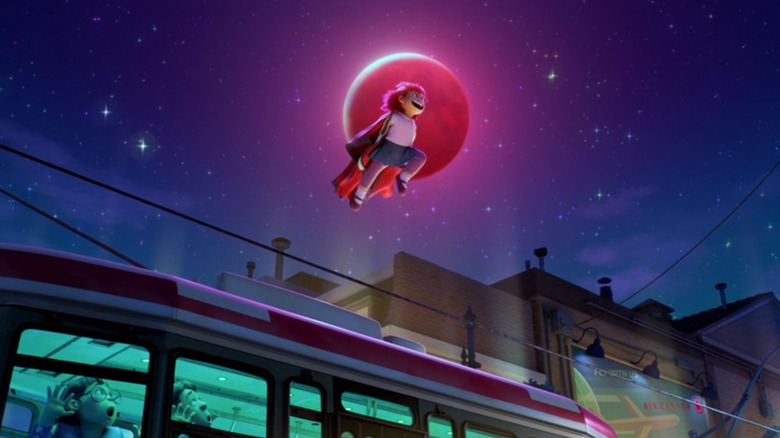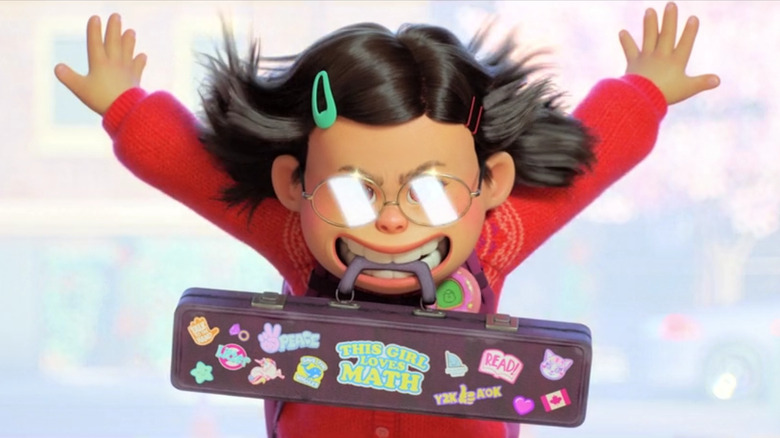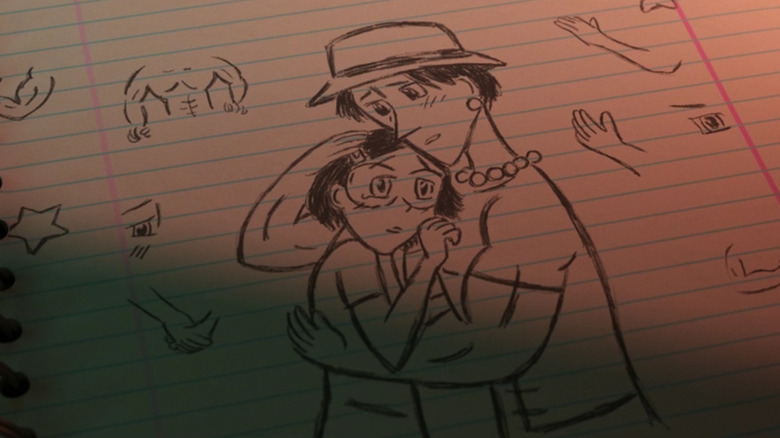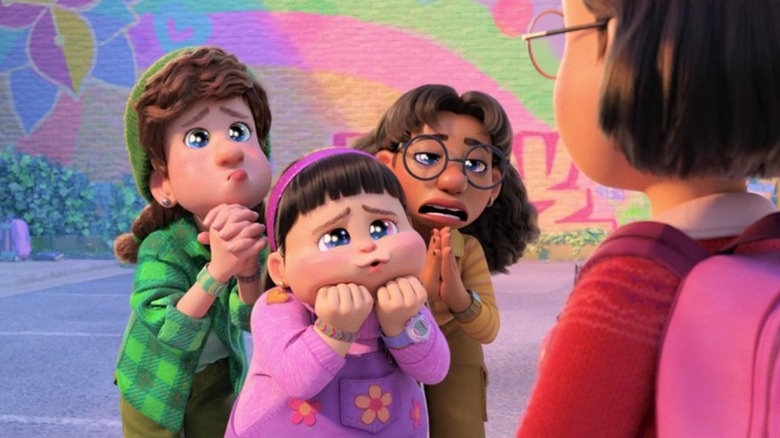Turning Red Is The Most Anime Pixar Has Ever Been — What This Could Mean For CG Animation
The history of Pixar runs in parallel with the history of CG animation in the United States. "Toy Story" broke ground as the first feature-length computer animated film. "Monsters Inc." pioneered fur, "Finding Nemo" water. "The Incredibles" figured out how to create charming three-dimensional human characters. So on and so forth until Pixar had mapped out the full breadth of reality within the boundaries of their production pipeline. It is only in recent years that artists at these studios have begun to ask themselves another question. "We can do realism really, really well," said director Domee Shi in an interview with the famous anime director Mamoru Hosoda. "So what's next?"
What's next was "Turning Red," Shi's first feature-length project as a director and a groundbreaking title for the studio. It's the first Pixar film made by a production team headed by women and the first Pixar film directed by a Chinese-Canadian filmmaker. While not as outrageously experimental as Sony Pictures Animation's masterpiece "Spider-Man: Into the Spider-Verse," "Turning Red" still makes daring choices both in subject matter and in its approach to animation. In the featurette "Embrace the Panda: Making Turning Red," the film's producer Lindsey Collins plainly states the team's priority: "How do we get out of the Pixar look? How do we get into some new things?" "Turning Red" takes inspiration from a source that Pixar's founders have always respected, but never attempted to recreate within the boundaries of CG: anime and manga.
The girl who leapt through time
"Turning Red" borrows from anime in a way that goes beyond homage or reference. Sure, the heroine Mei's hair becomes red after turning into a panda, just like Ranma's does when he turns into a girl in "Ranma ½." A later scene references Hosada's earlier film "The Girl Who Leapt Through Time." But what about the flashing effect on Mei's glasses in the image above? The giant starry eyes and screen tone that appear when Mei is overcome by emotion? These are obvious tells, but there are deeper cuts too. The more intense transformations in the film come with impact frames, a popular anime effects technique involving blink-and-you-miss-it chromatic drawings. Also present are speedlines, a shorthand for conveying intensity and movement that any reader of "Naruto" will recognize.
These techniques come at a cost. Pixar's pipeline, on which the foundations of modern CG animation in the United States were built, is meant to create objective reality. The characters may be cartoons and their reactions may be exaggerated, but their bodies and surroundings operate according to physics. Creating a new reality of abstractions requires changing that pipeline, a terrifying prospect in a medium as time-consuming as animation. Implementing 2D effect drawings meant integrating them with the 3D characters and their world. Other cases required "bending modeling, shading, lighting to become more graphic," changing the look of the setting itself to better fit Mei's reality. Even Mei's giant red panda form caused problems, resulting in the team having to "shrink her...10-15 percent so she can move and act and not intersect with other parts of the set."
An Asian tween fever dream
But these changes to the pipeline were made for a reason. Pixar's process was meant to model objective reality. "Turning Red" has a different end goal in mind: subjective reality. When pitching the film to the crew, Shi used the phrase "Asian tween fever dream." That doesn't mean just telling a story about an Asian tween girl. It means "designing it from her point of view."
Mei is hyperactive, loves to draw and is experiencing the rollercoaster of emotions that comes with puberty. To do its lead justice, its staff had to replicate this perspective for the screen. This meant using quick zoom cuts to signify immediacy as well as changes in focus. This meant embracing the tonal swings that define the film, selling easy intimacy between friends as effectively as Godzilla-sized red pandas and family tragedy. Most importantly, this meant capturing the appeal of Mei's notebook drawings on film.
"Embrace the Panda" makes it clear just how much of the film is taken directly from the past experience of its creators. Production designer Rona Liu confesses an obsession with perfection as a child that she had to grow past to become comfortable with the parts of her that were messy. Domee Shi mentions her own past as a fan artist, and how she would draw stylish "bishounen" (beautiful boys) in her notebook just like Mei would in hers. These memories can be embarrassing or even painful, but the creators of "Turning Red" understand that they can be important stepping stones as well. One of the best examples of this in the film is its use of the fictional boy band 4*Town; it isn't afraid to make jokes at their expense (why are there five of them?) but when they perform at the end of the film, the all-consuming euphoria that Mei and her friends feel in their presence is presented earnestly.
Designing from her point of view
In her interview with Mamoru Hosada, Shi mentions that "Mei has one foot in Asia and the West ... so that mix is best to express her." "Turning Red" pulls from the West when it has to, riffing on everything from the filmmaking technique of "Scott Pilgrim Vs. the World" director Edgar Wright to the names of characters from "The Simpsons." The story's emphasis on middle school embarrassment and tween female friendships echoes the work of middle grade comic greats like Raina Telgemeier and Gene Luen Yang. "Turning Red" also pulls from the East, with its lovingly depicted scenes of Chinese cooking and "Super Sentai"-style heroic transformations later in the film. Not to mention Hosada's own films, which have famously mirrored his feelings and life experiences throughout his career.
What's important is that Mei is not just one of these things. As a Chinese-Canadian, part human and part red panda, Mei can be all of these things at once. The film would not be able to tell her story to its best effect without expressing that complexity. Doing so means conveying this through style and technique as much as story or dialogue.
I don't believe that "Turning Red," or its predecessor "Luca," have yet nailed the formula for a new kind of Pixar movie. But then, who needs a formula? These young artists (with the help of their elders, if necessary) have the power to dismantle the houses of Disney and Pixar and build a larger, more inclusive one. But to do this, they need new tools. I'm eager to see what tools they will be.



